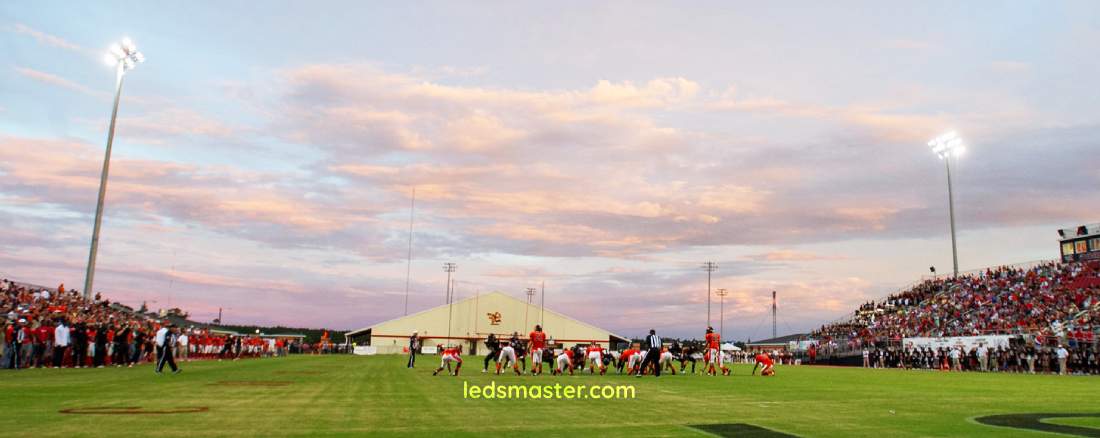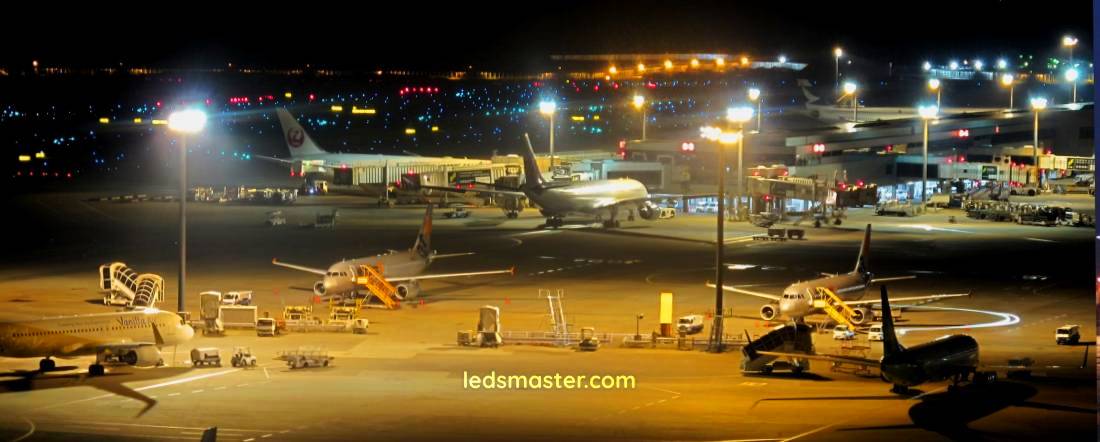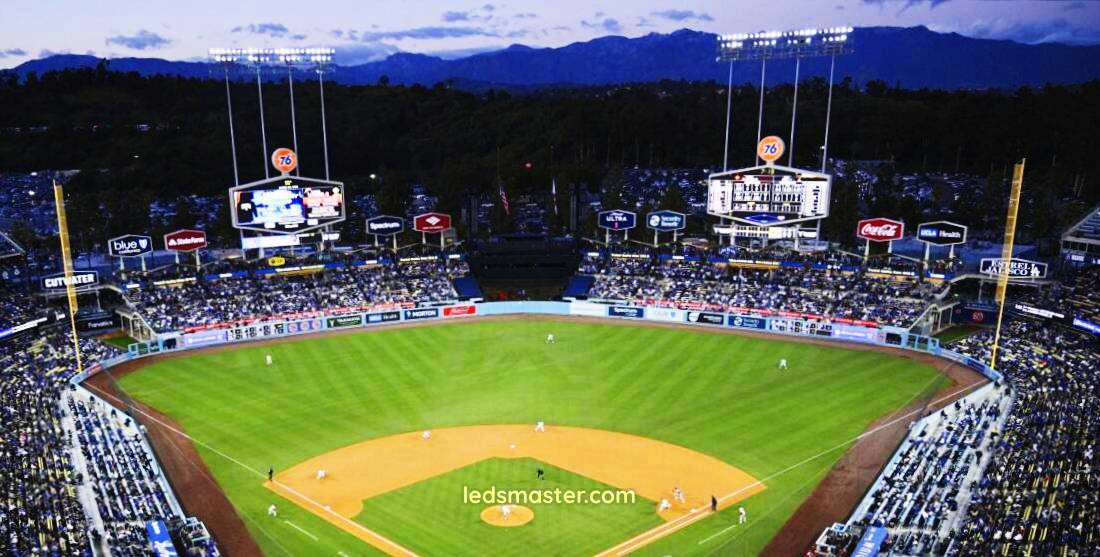From busy highways to large sports complexes, these towering fixtures illuminate spaces effectively, meeting the needs of growing urban environments. As the demand for reliable lighting solutions increases, understanding the costs involved in high mast lighting becomes essential for project planners and decision-makers
Get your complimentary lighting design today
High mast lighting has become a prevalent solution for illuminating large areas such as highways, parking lots, sports fields, and industrial sites. Its design allows for tall poles fitted with multiple light fixtures, providing a broad coverage area. Understanding the costs associated with high mast lighting is fundamental for effective project planning and budget management.
| Component | Description | Cost Range (USD) |
|---|---|---|
| High Mast Poles | Tall poles that support lighting fixtures. Standard heights range from 30 to 100 feet. Materials include galvanized steel, aluminum, or fiberglass. | $5,000 – $15,000 each |
| Lighting Fixtures | Various types of lights (LED, HPS, metal halide). LED fixtures typically cost more but have longer lifespans. Wattage options range from 100W to 1000W depending on the application. | $200 – $1,000 per unit |
| Installation Labor | Costs for skilled labor to install the system. Factors affecting costs include site conditions, height of poles, and number of fixtures. Hourly rates may range from $50 to $150 per hour. | $1,000 – $5,000 total |
| Control Systems | Systems for managing lighting (manual or smart controls). Smart controls may include timers, sensors, and remote management. Integration with existing systems may impact costs. | $500 – $2,500 |
| Site Preparation | Groundwork needed to install poles (excavation, concrete). Costs vary based on site conditions and required foundations. This may include landscaping restoration after installation. | $2,000 – $10,000 |
| Electrical Infrastructure | Wiring, junction boxes, and circuit panels. Costs depend on the distance from the power source and the complexity of the installation. Upgrading existing electrical systems may increase costs. | $1,000 – $5,000 |
| Maintenance (Annual) | Regular upkeep, including bulb replacements and inspections. The frequency of maintenance may depend on the lighting technology used. Budgeting for unexpected repairs should also be considered. | $500 – $2,000 annually |
| Energy Costs (Annual) | Costs for electricity consumption based on usage. This varies with the wattage of fixtures and hours of operation. Switching to LED can significantly reduce energy costs. | $500 – $3,000 annually |
| Total Estimated Costs | Overall investment considering all components and factors. Total costs will depend on the specific requirements of the project. | $15,000 – $50,000+ |
Table of Contents
Toggle
The initial costs of high mast lighting include several components, such as equipment and materials, site preparation, and installation.
The primary elements involved in high mast lighting systems encompass poles, fixtures, LEDs, and wiring. The selection of materials can significantly impact the overall price. For instance, steel poles are commonly utilized due to their durability, though they typically come at a higher cost compared to aluminum options. Additionally, LED fixtures have gained prominence for their energy efficiency and long lifespan, yet they often require a more substantial upfront investment compared to traditional lighting solutions.
Site preparation contributes to the initial costs as well. This phase may involve grading the land, installing foundations for the poles, and ensuring proper drainage to mitigate future issues. Projects situated in challenging terrains may see increased costs in this area.
Installation expenses further contribute to the initial budget. The complexity of the installation process is influenced by the height of the masts and the number of fixtures being mounted. Hiring specialized contractors with experience in high mast lighting installation can increase labor costs.
Operating costs encompass ongoing expenses that need to be accounted for when evaluating high mast lighting systems. These costs primarily relate to energy consumption and maintenance.
Energy consumption can vary based on the type of lighting technology used. Traditional high-intensity discharge (HID) lights typically consume more electricity than LED fixtures. As the push for energy efficiency continues, many organizations are transitioning to LED technology, which not only reduces energy costs but also lowers the frequency of bulb replacements due to their extended lifespan.
Maintenance is another important factor affecting the overall operating costs of high mast lighting. Regular inspections, cleaning of fixtures, and replacement of components are necessary to ensure optimal performance. The height of the masts complicates maintenance tasks, often requiring specialized equipment or trained personnel for routine checks and repairs. Consequently, this can lead to higher maintenance costs compared to lower-mounted lighting systems.
The location and site conditions of a high mast lighting project have a significant impact on overall costs. Factors such as terrain, accessibility, and local regulations contribute to the final budget.
Projects situated in remote or difficult-to-access locations may incur additional costs due to the transportation of equipment and labor. Challenging terrains can necessitate more extensive site preparation, leading to higher initial expenses.
Local regulations and permitting fees can also influence costs. Different jurisdictions have varying requirements for high mast lighting installations, including permits for installation and adherence to specific lighting standards. Researching local regulations before commencing a project can help avoid unexpected fees and delays.

The design specifications of high mast lighting systems directly affect costs. Factors such as the height of the poles, the number of masts required, and specific lighting requirements all play a role in determining overall expenditure.
Higher poles are often necessary for applications requiring extensive coverage, such as highways or large sports complexes. However, taller poles typically entail increased costs, not only for the poles themselves but also for installation. Engineering considerations to ensure stability and safety for taller structures can also raise expenses.
The number of masts required for a project depends on the desired illumination levels and coverage area. A larger area may necessitate more poles, thereby increasing overall costs. Additionally, specific lighting requirements, such as lux levels and uniformity, may require advanced fixtures or more lighting points, further contributing to expenses.
When comparing the costs of traditional high mast lighting to LED systems, several factors come into play that influence decision-making.
Traditional high-intensity discharge (HID) lights often have lower upfront costs compared to LED fixtures. However, the long-term savings associated with LEDs can outweigh the initial investment. LEDs consume significantly less energy and have longer lifespans, reducing the frequency of replacements and maintenance needs. Over time, the lower operational costs of LEDs can result in a more favorable return on investment, making them an attractive choice for various applications.
Additionally, the decreasing prices of LED technology over the years have made them more accessible, prompting many organizations to opt for LEDs despite their higher initial costs. The long-term efficiency and reduced environmental impact of LED systems contribute to their growing popularity.

The costs associated with high mast lighting can vary significantly based on the application. Different settings, such as sports fields, transportation hubs, and commercial areas, have distinct requirements that affect overall expenses.
In sports fields, the need for uniform lighting levels for player safety and visibility can lead to higher costs. The design may require multiple masts and fixtures to achieve the necessary illumination, resulting in increased upfront investment. Furthermore, sports lighting often adheres to specific standards set by governing bodies, influencing design and equipment choices.
For transportation hubs, such as airports and ports, high mast lighting serves a dual purpose: enhancing safety and facilitating operations. These projects may involve more complex designs and require adherence to strict regulations, contributing to elevated costs. Moreover, the need for reliability in these settings often necessitates higher-quality components, which can further impact the budget.
In commercial areas, high mast lighting enhances visibility and security for customers and employees. While these installations may not require the same level of brightness as sports fields or transportation hubs, the overall costs can still vary based on site conditions and design specifications.
| Application Type | Initial Cost Range | Operating Cost Range |
|---|---|---|
| Sports Fields | $15,000 – $50,000 | $500 – $2,000 per year |
| Transportation Hubs | $25,000 – $100,000 | $1,000 – $3,000 per year |
| Commercial Areas | $10,000 – $40,000 | $300 – $1,500 per year |
Accurate cost estimation plays a vital role in the success of high mast lighting projects. Employing various estimation techniques can help organizations develop realistic budgets.
Historical data and benchmarks serve as valuable tools for estimating costs. Analyzing past projects of similar scope and size can provide insights into expected expenses, helping to establish a baseline for new installations. This data can be gathered through industry reports, case studies, and consultations with lighting professionals.
Engaging professional services for cost estimation can yield precise figures. Experienced consultants and contractors can provide detailed breakdowns of expected costs based on project specifications, ensuring that organizations account for all potential expenses. These experts can also offer guidance on optimizing designs for budgetary constraints.
Exploring financial incentives and rebates can significantly alleviate the costs associated with high mast lighting projects. Many governments and organizations provide grants or subsidies to promote energy-efficient lighting solutions.
Programs aimed at encouraging the adoption of LED technology often offer financial support, making the transition more financially feasible. These incentives can vary by region, so researching available programs in the local area is important.
In addition to government incentives, utility companies may offer rebates for energy-efficient installations. Collaborating with local energy providers can uncover potential savings, enabling organizations to maximize their budgets while investing in high-quality lighting solutions.
Understanding the costs associated with high mast lighting requires consideration of multiple factors, from initial investments to ongoing operating expenses. By carefully evaluating elements such as equipment, location, design specifications, and potential financial incentives, organizations can make informed decisions that align with their goals and budgets. High mast lighting systems provide a reliable solution for enhancing safety and visibility across various applications, making them a valuable addition to any project.